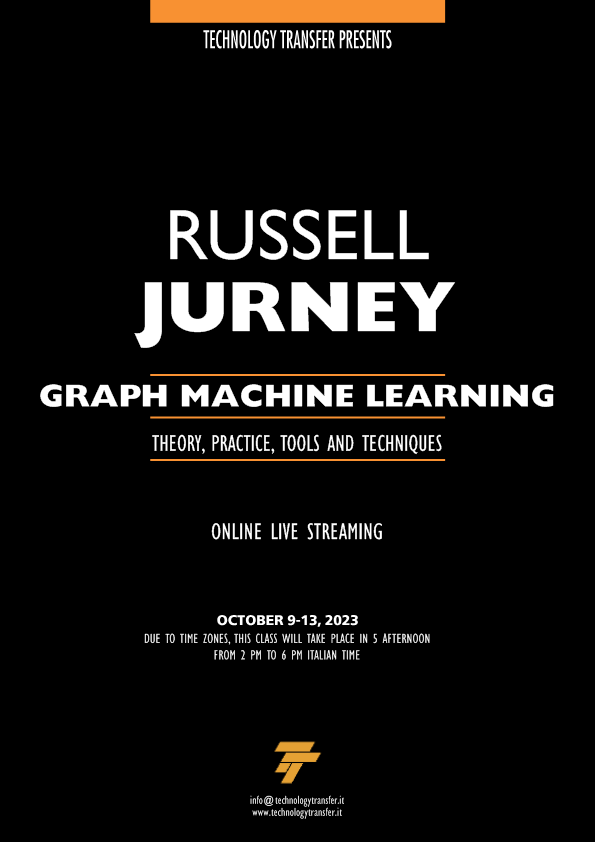Knowledge Graphs are at the peak of the Gartner hype cycle and Graph Neural Networks (GNNs) are soon to be high on the ramp because they tap and unlock the potential of Enterprise Knowledge Graphs. Data Lakes put data in one place, Knowledge Graphs link datasets together and graph neural networks automate business processes using data from across an enterprise.
I’ll let you in on a secret that is driving the popularity of Enterprise Knowledge Graphs and Graph Neural Networks (GNNs): MOST DATA IS GRAPH DATA. To compose a single table, several tables have usually been squashed into one. There’s a problem with this… the relational bias of a data table means modeling it doesn’t have the same potential as the original tables had. It is diluted. This is what is driving the graph revolution sweeping the US and spreading to Europe.
In this course, we will take the skills you’ve developed in working with data tables and DataFrames and extend them to cover graphs, networks, knowledge graphs and property graphs. We will work with different types of graphs from across domains. This includes natural networks like social networks, collaboration networks or communications networks as well as structural networks like the plan of a Python program or the 3D mesh of a model of a 3-dimensional scene. We will introduce common Python and R tools for Graph Analytics and Graph Machine Learning as well as the most popular graph databases. We will focus on property graphs but will also compare them with RDF/triple stores using SPARQL. We will cover the basic concepts of social network analysis and network science.
This course is for Data Scientists and Machine Learning Engineers who want to extend their work with data tables or DataFrames to data with a relational structure – entities (nodes/vertices) and their connections (edges/links). Beginning with a grounding in theory and applications, we will build Knowledge Graphs using Natural Language Processing (NLP), analyze networks using graph analytics and extract the full potential of relational structures in data by automating decisions using Graph Machine Learning including graph embeddings and Graph Neural Networks (GNNs). When the course is completed, you will be able to include graph datasets in your daily work.
